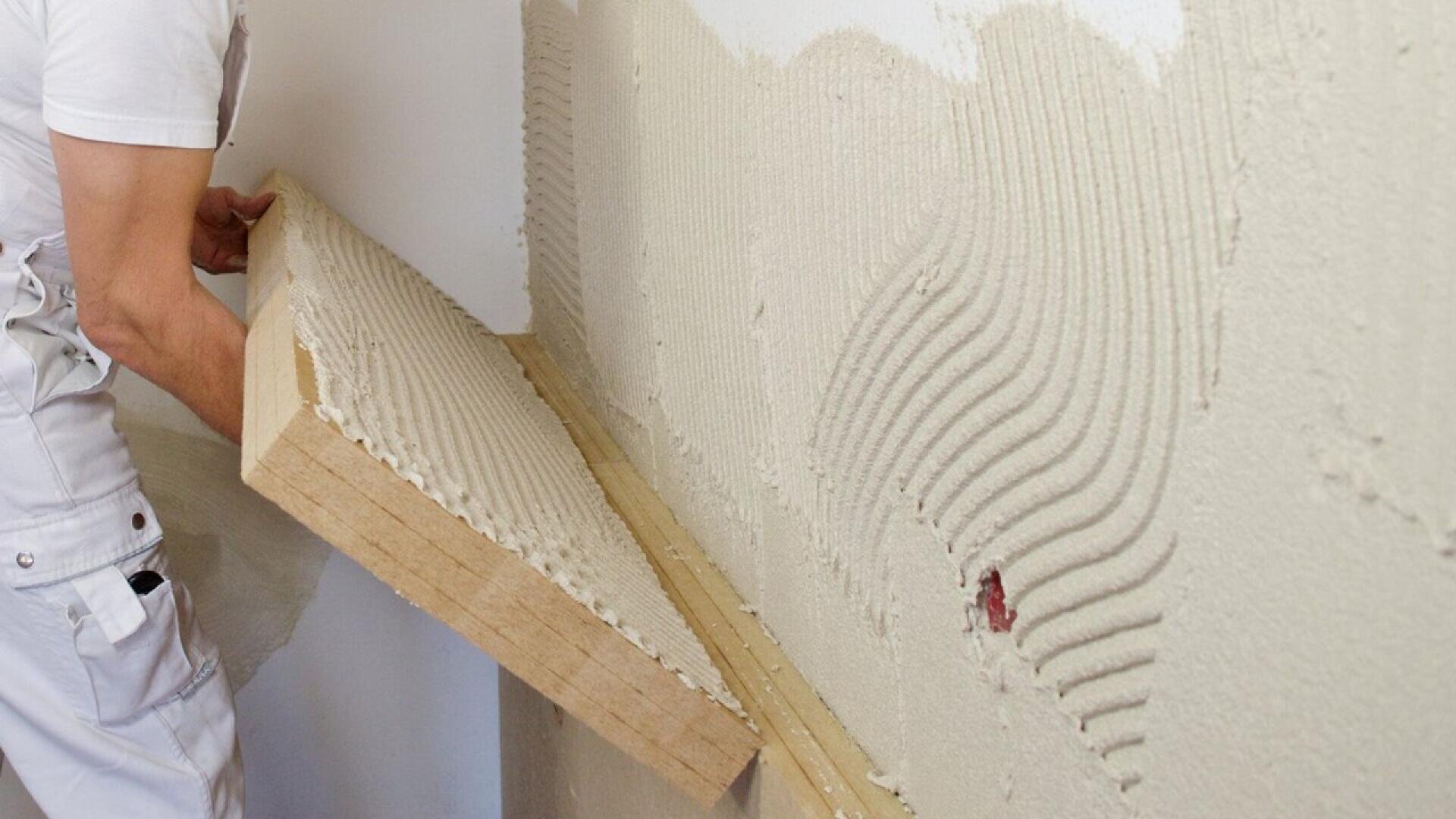Advantages of wood fibre interior insulation
A few centimetres of internal insulation can significantly improve the external wall U-value of old buildings. Wood fibre insulation materials offer advantages in terms of building biology and building physics. They can be used in both diffusion-open and diffusion-inhibiting systems.
Wood fibre insulation materials are natural products and therefore have a high building biology quality, store large amounts of CO2 and are open to diffusion. They can also absorb up to 15 % of their own weight in moisture, store it temporarily and release it again without any significant loss of insulation performance. This enables them to buffer phases of high indoor humidity - which promotes a healthy indoor climate and reduces the risk of excessive moisture penetration of the building fabric.
Above all, however, they fulfil their core task of thermal insulation with λD values of 0.036 to 0.038 W/(mK) better than, for example, the frequently used calcium silicate boards with 0.045 to 0.065 W/(mK). Often, 6 cm thick wood fibre internal insulation is sufficient to reduce the external wall U-value to a level that the ‘Federal Funding for Efficient Buildings’ (BEG) promotes as an individual measure and enables the heating system to be converted to a heat pump.
Wood fibre insulation materials also offer a variety of possible applications: In the form of robust insulation boards, they can be glued over the entire surface of the existing wall and then plastered. Or they can be used in the form of flexible insulation mats to fill the gaps between wall studs.
Wall stud solutions are more stable
The wall stud variants are sealed with panels that are much more load-bearing than thermal insulation. This always makes sense if loads such as pictures, shelves or tiles are to be attached to the exterior wall. Squared timber, which is mounted on the existing wall, is usually used as a substructure. Flexible wood fibre insulation mats in the cavities insulate even better than robust wood fibre insulation boards, as they have a lower bulk density.
However, a lower bulk density also means a slightly lower moisture storage capacity. For this reason, the cavities must be sealed airtight with OSB boards or a vapour barrier membrane. Plasterboard or gypsum fibre boards are then placed on top. Or thin wood fibre plaster base boards if a plaster surface is desired for design reasons - a uniform wall surface in the entire room.
Insulation effect is almost the same
The U-values that can be achieved with the different variants differ only slightly: For example, a 6 cm thick STEICOinternal insulation board with a λD value of 0.038 improves an initial U-value of 1.3 W/(m2K) to 0.43 W/(m2K). Wall stud solutions with 6 cm insulation thickness improve it to 0.45 to 0.47 W/(m2K). Although wall studs are thermal bridges, insulation mats such as STEICOflex 036 with their λD value of 0.036 W/(mK) largely compensate for this.
The insulation thickness that makes sense for a renovation project is determined
1. the U-value of the existing wall,
2. the question of which U-value is being aimed for and whether this should fulfil the requirement for a subsidy, as well as
3. the size of the panel heating system if a heat pump is to be installed. This is because the larger the panel heating system, the lower its flow temperature can be. And the lower the flow temperature, the more efficiently a heat pump works. This further reduces the final energy requirement enormously.
If a new floor is laid as part of a refurbishment, underfloor heating is of course the most sensible solution. However, if the old floor remains in place, it makes sense to integrate wall heating into the new interior insulation. There are numerous systems on the market for this.
Funding: yes, minimum standard: no
If the building is a ‘listed building or other structure worthy of preservation’, a building owner can receive a subsidy of 15% or 20% of the construction costs for interior insulation from the ‘Federal subsidy for efficient buildings’ (BEG) as an individual measure or, alternatively, have the tax office reduce the income tax payable by 20% of the construction costs. A U-value of 0.45 W/(m2K) must be achieved for this, and only 0.65 W/(m2K) for half-timbered houses.
There is no statutory minimum standard for interior insulation. The term ‘internal insulation’ does not appear once in the German Building Energy Act (GEG). The U-value of 0.24 W/(m2K) prescribed by the GEG only applies to the ‘installation of insulation layers on the outside of an existing wall’. Conversely, this means that No specific U-value has to be achieved when installing on the inside.
Building owners are therefore completely free to decide how thick their internal insulation should be. Its energy-saving potential is astoundingly high. This is because the first few centimetres always insulate the most. And since it is not only the room air temperature but also the heat radiation from the surfaces surrounding the room that is decisive for the human perception of temperature, the room air temperature can be lower - which further increases the energy-saving effect.

